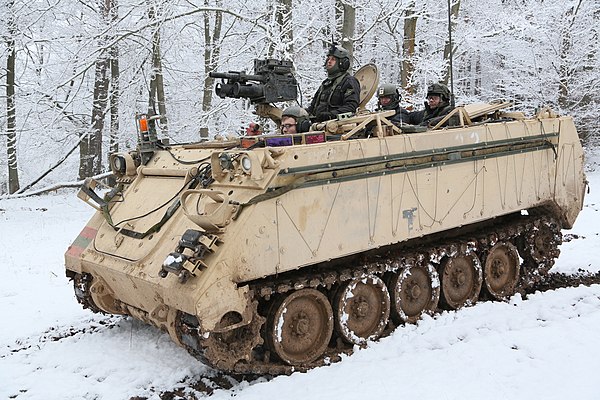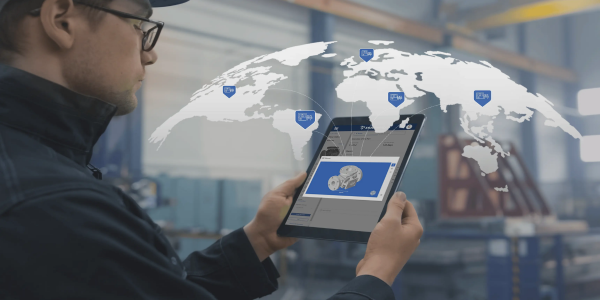The US Army Combat Capabilities Development Command (DEVCOM) Ground Vehicle Systems Center (GVSC) has awarded 3YOURMIND and Phillips Corporation Federal Division a contract to develop part identification solutions for tanks. In collaboration with the US Army Tank-automotive and Armaments Command (TACOM), GVSC will work with 3YOURMIND and Phillips to automate the process of determining which M113 armored personnel carrier parts can be produced with additive manufacturing (AM).
Notably, this project is directly connected to one of 2023’s largest single US government contracts for military advanced manufacturing activities: GVSC’s award of $100 million to the National Institute for Aviation Research (NIAR) at Wichita State University to develop powder bed fusion (PBF) and directed energy deposition (DED) applications for the Army’s ground fleet. According to the press release for the 3YOURMIND contract, GVSC and NIAR have “successfully reverse-engineered and developed a digital twin for the M113”.
3YOURMIND’s role is to “analyze up to 10,000 parts selected by GVSC”, assessing them for their potential to be 3D printed on the grounds of lead time and cost, as well as technological capability. This has become routine business for 3YOURMIND and Phillips, which have partnered on projects for a variety of US federal agencies, including a similar contract awarded about a year ago, worth $2.5 million, for parts identification related to the US Marine Corps Digital Manufacturing Data Vault.
In a press release about the GVSC contract for M113 digital parts identification, William Cuervo, the VP of North America for 3YOURMIND, said, “Our previous efforts with the Department of Defense have positioned us well to support the enterprise [AM] ambitions of the GVSC. We’re excited to support the GVSC in identifying and producing parts that can be used to sustain equipment critical to the safe passage of our troops.”
The M113 is an especially good candidate for AM-enabled maintenance, repair, and operations (MRO) because, while it stopped being made in 2007, thousands of M113s are still in use around the world. Thus, demand for M113 spares should, for some time, continue to outlast the efficiency and profitability of making those spares with conventional manufacturing methods.

A U.S. Army M113 Armored Personnel Carrier of 1st Battalion, 4th Infantry Regiment provides an over watch while conducting recon operations during exercise Allied Spirit at the Joint Multinational Readiness Center in Hohenfels, Germany, Jan. 26, 2015. Exercise Allied Spirit includes more than 2,000 participants from Canada, Hungary, Netherlands, United Kingdom, and the U.S. Allied Spirit is exercising tactical interoperability and testing secure communications within Alliance members. (U.S. Army photo by Spc. Tyler Kingsbury/Released)
As the main stakes driving the US Navy’s acceleration of AM adoption have become clear in the last year or so, I’ve been anticipating that the US Army would be next. For a variety of reasons, especially obsolescence and domestic labor shortages in the relevant fields, the rationale behind using AM for tanks is highly similar to that behind using it for subs.
Even more pressingly, there’s an overarching rationale behind getting all of the branches within DoD on the same level when it comes to advanced manufacturing in general, and AM specifically. Until that happens, the full operational force of the US government’s digital manufacturing efforts will remain far from maximized. But when AM parity is finally reached across all the branches, and even more importantly, across the government as a whole, the impact can be expected to reverberate over the entire AM industry — not just in the US, but globally.
Subscribe to Our Email Newsletter
Stay up-to-date on all the latest news from the 3D printing industry and receive information and offers from third party vendors.
Print Services
Upload your 3D Models and get them printed quickly and efficiently.
You May Also Like
Consolidation in AM: How 2025 Is Shaping the Industry’s New Normal
The first half of 2025 has been marked by a clear shift in the additive manufacturing (AM) industry. Companies are no longer just focused on developing new tech by themselves....
Etsy Design Rule Change Reduces Selection of 3D Printed Goods
Online marketplace Etsy has implemented a rule change requiring all 3D printed goods on the site to be original designs. The update to the site’s Creativity Standards states, ¨Items produced using...
U.S. Congress Calls Out 3D Printing in Proposal for Commercial Reserve Manufacturing Network
Last week, the U.S. House of Representatives’ Appropriations Committee moved the FY 2026 defense bill forward to the House floor. Included in the legislation is a $131 million proposal for...
Transforming From Tourist to Native: Duro CEO Michael Corr Explains Why the Company Rebuilt its PLM Software on AI
In these early innings of the AI boom, many market analysts have expressed concern that AI spend has gotten too far ahead of the technology’s proven ability to deliver significant...

































